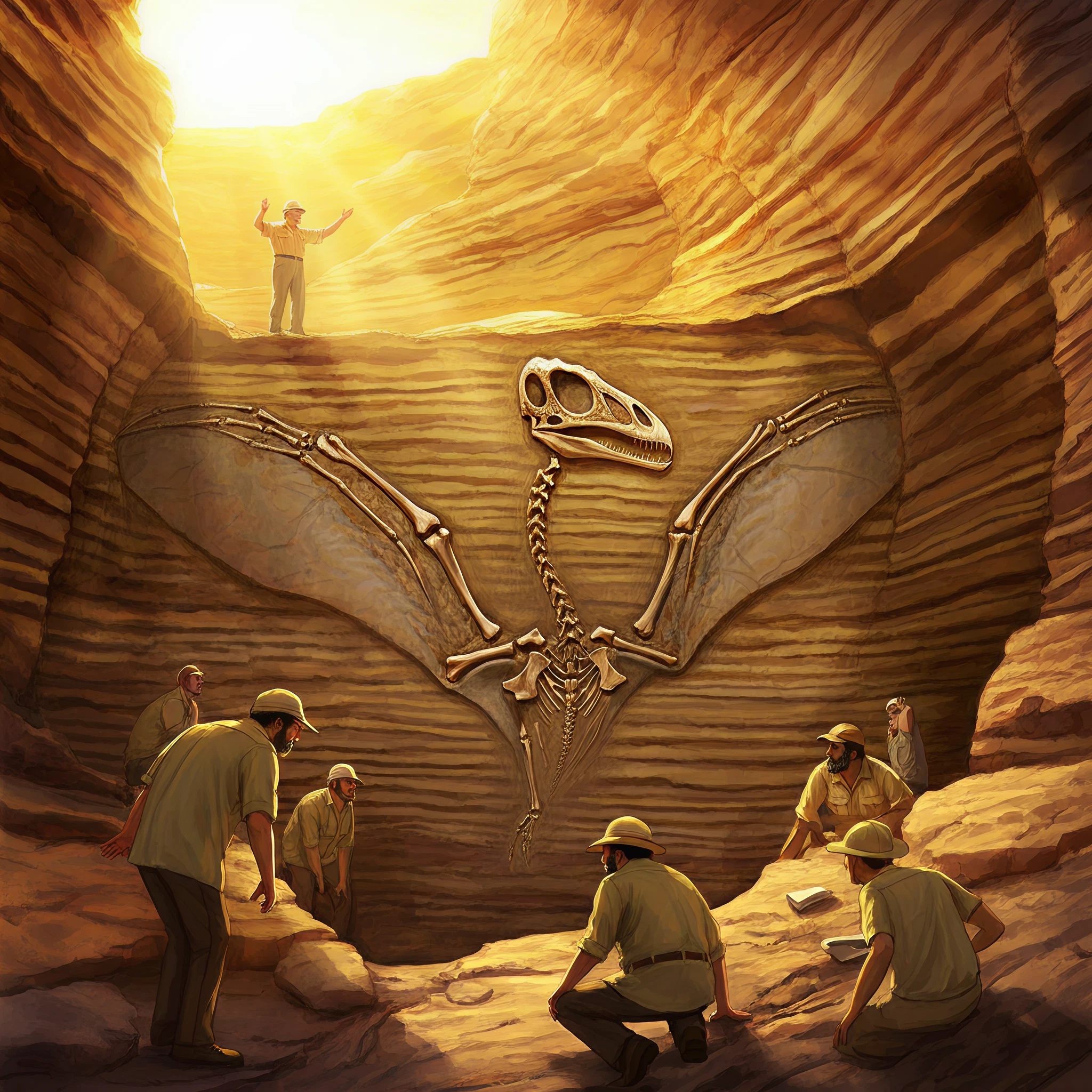Millions of years ago, the skies weren’t ruled by birds as we know them today. Instead, a variety of ancient creatures, including feathered dinosaurs and the fascinating Pterosaurs, took to the air. The evolution of flight in dinosaurs is one of the most captivating chapters in natural history, showcasing how adaptations like feathers, lightweight skeletons, and wing structures transformed land-bound reptiles into the ancestors of modern birds.
This article dives into the story of how dinosaurs took to the skies, highlighting their evolutionary path, key adaptations, and the groundbreaking fossil evidence that continues to shed light on this ancient phenomenon.
The Evolutionary Link Between Dinosaurs and Birds
The connection between dinosaurs and birds has been solidified through decades of paleontological research. Fossil evidence provides a bridge between flightless theropod dinosaurs and the avian species we see today. One of the most crucial pieces of this puzzle is Archaeopteryx, a small dinosaur with bird-like feathers that lived approximately 150 million years ago. This Jurassic era creature represents a critical link between non-avian dinosaurs and modern birds.
Feathers, originally thought to have evolved for insulation or display, played a pivotal role in enabling flight. Fossils of feathered dinosaurs, such as the microraptors and Archaeopteryx, reveal the gradual transition of feathers from insulating structures to aerodynamic tools. Skeletal adaptations, such as lightweight, hollow bones and fused clavicles forming a wishbone, further reflect evolutionary shifts that supported aerial locomotion.
The Chicago Archaeopteryx, a newly prepared and extraordinarily well-preserved fossil now on display at the Field Museum, has taken this understanding even further (learn more in this SciTechDaily article). Researchers have discovered new feather types and skeletal details in this specimen, emphasizing its role as a key transitional species in the evolution of flight.
Pterosaurs Independent Flyers
While feathered dinosaurs charted the evolutionary path to birds, another group of reptiles independently mastered the skies. Enter the Pterosaurs, fascinating creatures that evolved flight long before their dinosaur relatives. However, unlike dinosaurs, Pterosaurs were not direct ancestors of modern birds.
Pterosaurs had unique adaptations such as membranous wings supported by elongated fourth fingers, unlike the feathered wings of avian dinosaurs. Their lightweight skeletons and keeled breastbones optimized them for flight, but their mechanisms differed vastly from those of feathered flyers.
The independence of Pterosaurs and birds in their development of flight is an excellent reminder of the many evolutionary pathways that can lead to a similar ability. Each group adapted to its environment, taking to the skies in ways that were uniquely suited to their anatomy.
The Role of Feathers in Dinosaur Flight
Feathers are one of nature’s most incredible inventions. They evolved from scales, initially serving as insulation or for display. Over time, feathers transitioned into structures that enabled flight. Fossils like Archaeopteryx give us key insights into how feathers worked as aerodynamic tools in early flying dinosaurs.
The recent discovery of tertial feathers in the Chicago Archaeopteryx represents a breakthrough, revealing feathers on the upper arm that filled aerodynamic gaps for more efficient flight. These features distinguish Archaeopteryx from non-flying feathered dinosaurs and highlight how feathers became increasingly optimized for aerial movement.
New research also underscores the importance of feathers in modern birds. This fossil discovery highlighted by SciTechDaily demonstrates how ancient feathers mirrored those of their modern avian descendants, offering a direct connection between prehistoric flyers and today’s birds.
Fossil Evidence The Chicago Archaeopteryx
The Chicago Archaeopteryx fossil, meticulously prepared using advanced techniques like CT scanning and UV light, has contributed unparalleled evidence to our understanding of dinosaur flight. This specimen, preserved in Germany’s Solnhofen limestone and acquired by the Field Museum in 2022, is the most detailed Archaeopteryx fossil discovered to date.
Key Highlights:
- CT Scans for Precision: Scientists used CT scans to map out the fossil in extraordinary detail, ensuring that every structural element, including fragile bones, was preserved.
- UV Light for Soft Tissue: Unearthed soft tissues like scales on toes and vital feather patterns, never visible using traditional methods.
- Revised Wing Structure: The fossil revealed the presence of long tertial feathers, addressing critical questions about flight mechanisms in early birds.
The Chicago specimen reaffirms the pivotal role of Archaeopteryx as a bridge species, advancing our understanding of early avian evolution.
For a deeper exploration, read about the discovery and preparation of this remarkable fossil in this SciTechDaily article.
Implications and Further Research
The story of flight in dinosaurs isn’t just about the past; it also informs our present and future understanding of biology, evolution, and adaptation. Here are some key implications of these discoveries:
- Advancing Evolutionary Theory: Fossils like Archaeopteryx provide tangible evidence that supports Darwin’s theory of evolution.
- Understanding Biodiversity: Insights into dinosaur flight shed light on how animals adapt to their environments.
- New Avenues for Research: Future studies might focus on understanding the genetic changes responsible for the transition from scales to feathers or on discovering new transitional species.
Ongoing research, coupled with advancements in fossil imaging and preparation, promises to uncover even more ancient mysteries. What other surprises are hidden in prehistoric rock layers? Only time (and technology) will tell.
Closing Thoughts
The evolution of flight in dinosaurs is a remarkable story of adaptation and innovation. From feathered theropods to the independent flyers of Pterosaurs, these prehistoric creatures dominated the skies in ways we are only beginning to understand.
With every fossil discovery, we open a window into the distant past, piecing together a narrative that bridges epochs and connects us to our planet’s ancient inhabitants. The Chicago Archaeopteryx and its groundbreaking insights serve as a constant reminder of how much we have yet to learn.
Want to stay updated on similar breakthroughs in paleontology and evolutionary biology? Follow the latest on SciTechDaily and join the conversation about the incredible innovations in nature’s history.








